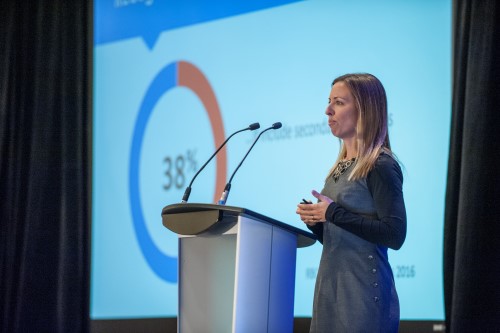

Many Canadian workers who experience a mental illness face barriers and obstacles when it comes to diagnosis, treatment and returning to work. But new virtual programs show there are steps employers can take to help employees get well and back to work.
Julie Gaudry, senior director of group of business markets at RBC Insurance Services Inc.; Eric Glazer, vice-president of innovation at Best Doctors Inc.; and Michael Sheppard, registered psychologist at Dialectical Behaviour Therapy Centre of Vancouver, spoke at the recent Mental Health Summit in Vancouver about how plan sponsors can reinvent support for employees with mental illness.
“Lack of patient advocates makes it difficult for employees with mental illness to find the resources they need,” said Gaudry.
Read: A primer on supporting employees with mental illnesses
“Delayed or no access to mental-health specialists, such as psychiatrists and psychologists, can lead to misdiagnosis or inadequate treatment pathways. And even if someone is lucky enough to see a specialist, there is a lack of co-ordinated communication between health-care providers, claimants and their insurance carrier. The situation is frustrating for the insurer, the employer and the employee.”
Options to address the issues include early-intervention clinical support programs for people on long-term disability with a mental illness. The programs provide earlier access to clinical support; confirmation or a change in diagnosis and recommended treatment plans; and co-ordinated care for people who are sick enough to go on disability.
Delivered through videoconferencing, the approach begins with an initial assessment by an occupational therapist to understand the functional recovery needed to return to work. Subsequent meetings with a psychologist “peel back the onion to understand what the patient is dealing with,” said Glazer, noting the weekly meetings go on for 12 to 16 weeks. The approach also involves consulting a psychiatrist to guide pharmacological treatment. Before treatment begins, the occupational therapist, psychologist, adjudicator and rehabilitation specialist meet to make a plan for a return to work.
Read: Options to optimize mental-health treatments
Sheppard shared a case study of a 45-year-old man with a major depressive disorder who had been on disability for seven months before starting treatment. The goal was to reduce anxiety and depressive symptoms, build meaning and social connections outside of work and to return to the job. After 15 sessions, his depression, anxiety and stress levels dropped; he had fewer panic attacks, more confidence and a better attitude; and he returned to work.
“The overall results of this program are better than we hoped for,” said Gaudry. “There was a change in diagnosis in 92 per cent of cases; a change in treatment plan in 84 per cent of cases; and change in medication in 61 per cent of cases. One of the biggest drivers of results is better access: wait times to see a psychologist fell by 132 days and to see a psychiatrist by 99 days. This resulted in a greater than 40 per cent reduction in claim duration on average. This is huge and very important to us and to plan sponsors.”
Read more stories from the Mental Health Summit
